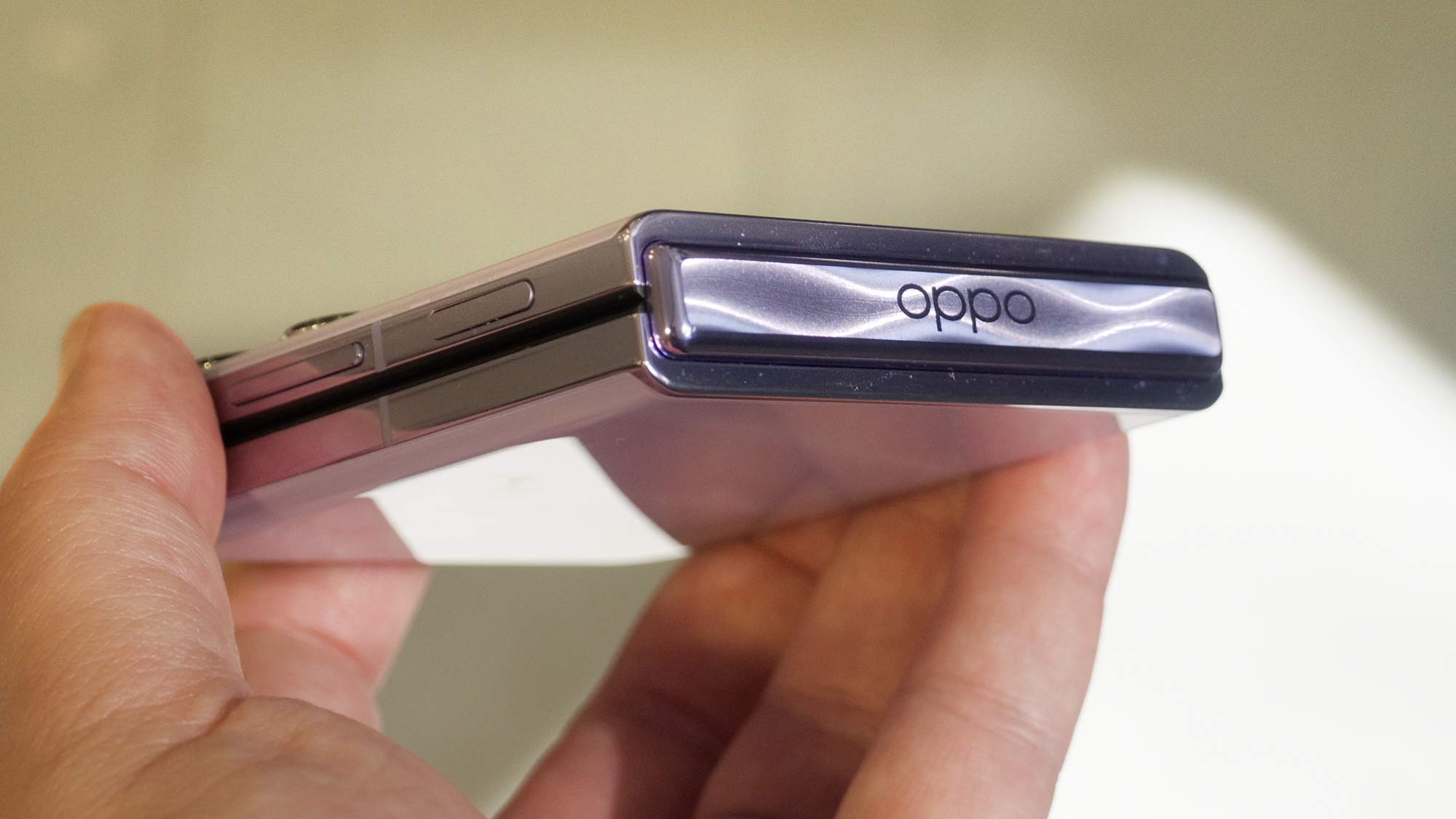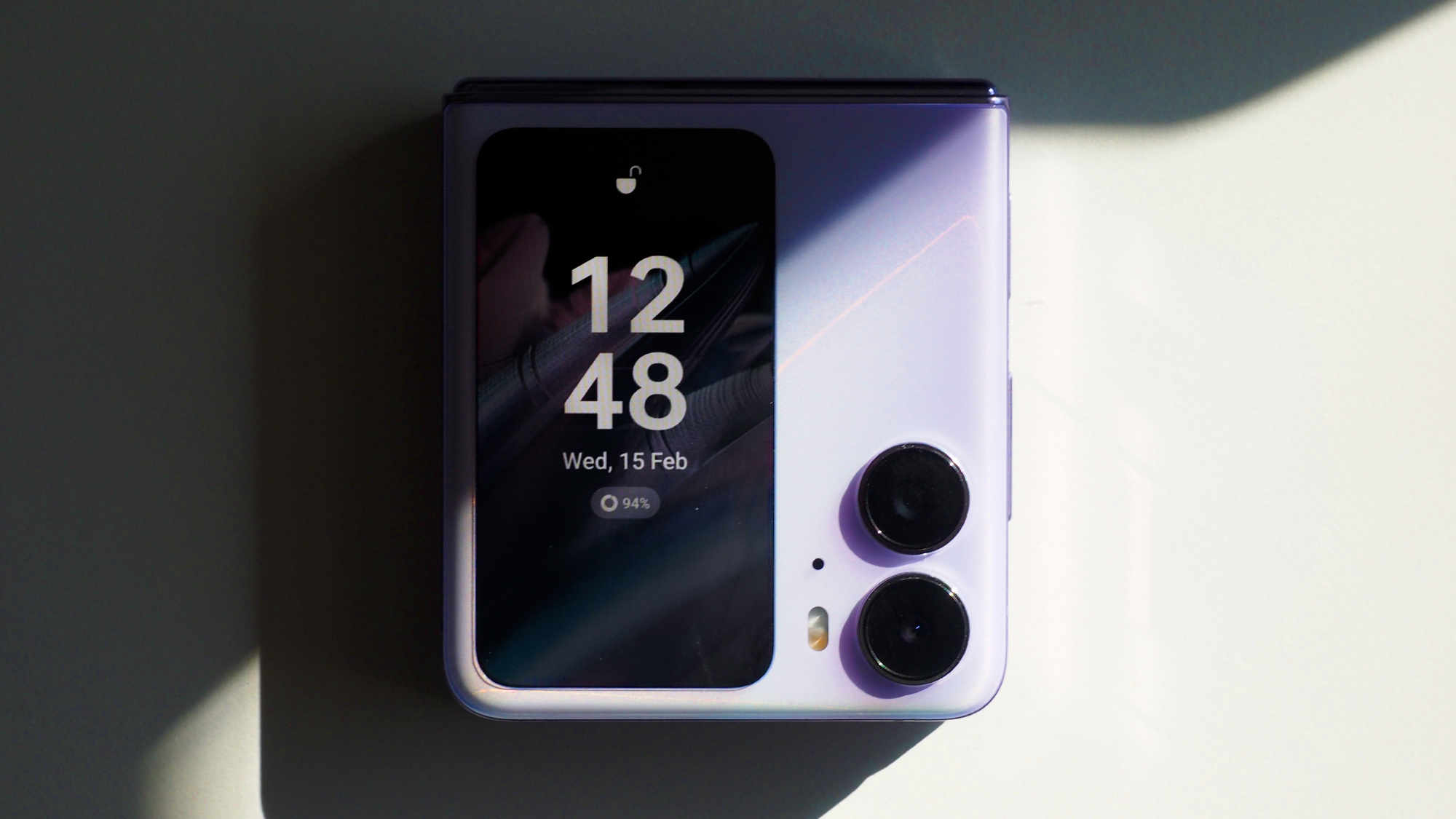Sitting in on a Q&A session fronted by several members of Oppo’s senior product and strategy teams on day one of Mobile World Congress this year, we were treated to illuminating insight on the company’s current approach to the foldable market and why it feels the time isn’t right for such technology to trickle down to the mid-range space.
Although we’ve had the ability to fork over cash for foldables for about three years, the materials, engineering and hardware that go into such devices still render them notably more expensive than similarly-specced alternatives that don’t have to bend at the waist.
A week prior to MWC 2023, Oppo unleashed its first foldable clamshell on the world, the Oppo Find N2 Flip. Despite being a great value for a folding smartphone (at £849 in the UK), it still prices-out plenty of users that would otherwise welcome the convenience of a compact foldable in their pocket.

When asked whether there was space for fold or flip style phones with a mid-range price point, Oppo’s Vice President for Overseas Sales and Service, Billy Zhang, had a lot to say in response.
Speaking via a translator, Zhang explained, “Now, when we talk about a product like [a mid-range foldable], we need to think about whether it can really deliver a good experience, because in order to try to hit the mid-range price band, if we sacrifice things like SoC [the chipset] or imaging, then that would not be good. Because, if we cut corners with the SoC, we will not be able to maximize the computing power of the imaging as well.”
Zhang continued, “As the shipments of foldable products increases, then definitely, there will be more room for costs-down – from a supply chain perspective, but this process will take time.”
You’d think that was all she wrote; Zhang confirmed that cutting corners to bring such a device to market would be detrimental to the user and until shipments increase, costs aren’t likely to come down.
If competitors want to do it, just let them do it.
Billy Zhang, Oppo
It was evident that Zhang wasn’t done; he was eager to expand on the potential and viability of mid-range foldables.
“I’d just like to share more comments regarding the cost-down of flip phones,” he continued. “Some initial ideas could be the removal of the cover screen, cutting corners with the SoC, cutting corners with the camera.
“But when we talk about the flip phone, if we remove the cover screen, that definitely is not a good experience, because the cover screen is important to bring you more convenience to check quick notifications and stuff like that. Or if you cut corners in the SoC, that will have an impact as well.”
“In about six month’s time or maybe a longer time, there might be these kind of flip phones available in the market, but they may cut corners – like using plastic in their frames or removing the cover screen – but definitely, that’s not a good experience for us; that’s not something we [Oppo] want to do. If competitors want to do it, just let them do it. User experience is our first consideration.”
Affordable foldables, but at what cost?

Based on Zhang’s statements, it’s unlikely that we’ll see a foldable with a significantly lower price tag anytime soon.
Oppo wants to seem uncompromising in its approach to product development and its message is that the user experience comes first; an aspect of any device that’s guaranteed to suffer if you start hacking off fundamental interaction methods (like a cover display) or features.
Zhang did, however, leave the door open for other manufacturers to make the tough call on what needs to be cut in order to bring a familiar foldable experience to the mid-range market. The question then is, who’s first?
Check out our rundown of the best foldables and you can find out more about the Oppo Find N2 series while you’re at it.
stereoguide-referencehometheater-techradar